Imaging Resource has samples available for the D800 already, so I wondered right away how they might compare to the D7000 at very high ISO under marginal lighting, as seen in their mannequin series of images.
I put together some crops to show you what happens at this ISO when processed in the Adobe 2012 process available in Lightroom 4 or CS6 / ACR7 beta. To do this, I had to download the D800 NEF file here and the D7000 NEF file here. The D800 required processing with the DNG converter 6.7 release candidate in order to become palatable to ACR 7, but that allowed me to proceed with the “test” …
Why is this test interesting? Well, those who worry about high ISO might want to have a look at what is really possible before eschewing the high density D800 in favor of the lower density D4 or D3s. This because the end result is impressive, especially once downsized to something more “normal,” like 16Mp.
So, for example, if you tend to post online or make small prints (say, up to 11x14), then the downsized comparison makes more sense for you. If you tend to look to the creation of posters from your high ISO images (e.g. concerts,) then you should look at the full sized comparison.
I am not comparing the D800 against the D4. Clearly, the D4 will handle some forms of noise (e.g. chroma) better with its much larger pixels. I find that the main difference when pixel density starts to approach these levels is that the shadows tend to turn blue and require extra processing to be tamed.
This is all tied, I believe, to the frequent need to push the blue channel very hard when fixing white balance in bad light (which is what low light often is under tungsten lighting.) The much smaller pixels have much less chance to gather photons and thus we get an inordinate amount of blue information in deep shadow where there was no information before. This has been visible on all compacts with RAW since the F550, and the D7000 exhibits it as well.
Anyway, ignoring that issue, the two cameras have similar pixel densities (D800 in drop mode is around 15Mp and D7000 is 16Mp) and thus will have similar responses at 6400 ISO. The question I want to answer is, will the D800 be “good enough” at 6400 ISO, especially with its inherent sensor size advantage over the D7000, which itself is no slouch at 6400 ISO?
So … the crops:
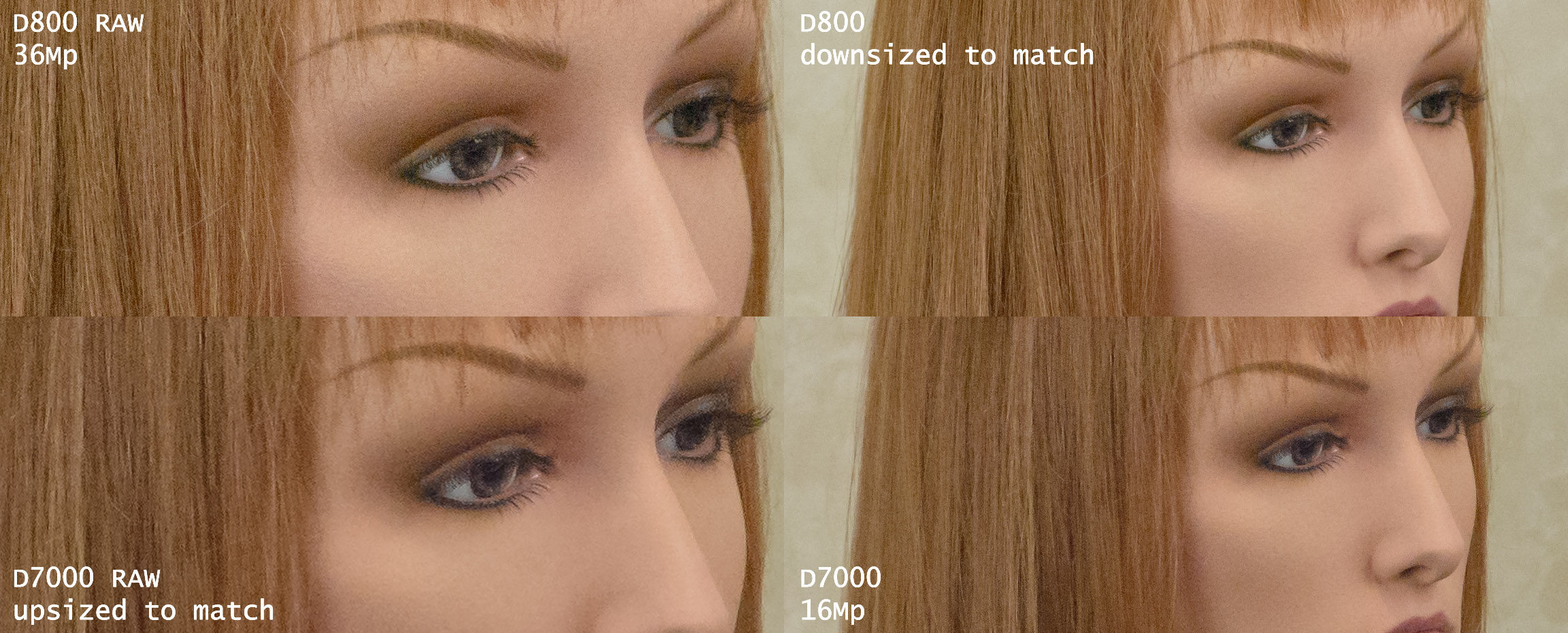 original images copyright © 2011-2012 imaging-resource.com
original images copyright © 2011-2012 imaging-resource.com
You will definitely click on the image above to see it at full size. What I see is that the D800 has a pretty obvious advantage over the D7000 at both the large and the small size. The D7000 is actually quite good at 6400ISO in this light, but the D800’s sensor size advantage shows up in the way hair detail and texture is retained and the amazing eyelash and skin detail at such a high ISO.
So while I really enjoy shooting the D7000 at high ISO, the D800 would be that much better. And I would have no problem using the D800 at this ISO for most shooting. Anyone with even a modicum of skills could get useable images at these ISOs. Even when processing for poster-sized prints. This camera is simply amazing in its flexibility.
And what do I mean by flexibility? Well, the D800 is a landscaper’s dream at 36Mp. It is very competent at high ISO, retaining superb detail once sized to whatever output you want. And it can shoot crop mode at 15Mp, making it a very competent DX camera as well, enabling the use of DX lenses if one happens to have those lying around. I can easily imagine a person who wants to have one camera shooting FX when useful (studio portraits) and DX when on vacation with the 18-200VR or something similar. And of course the camera has broadcast quality video and amazing audio.
And finally, here is what the D800’s 6400 ISO image looks like downsized:
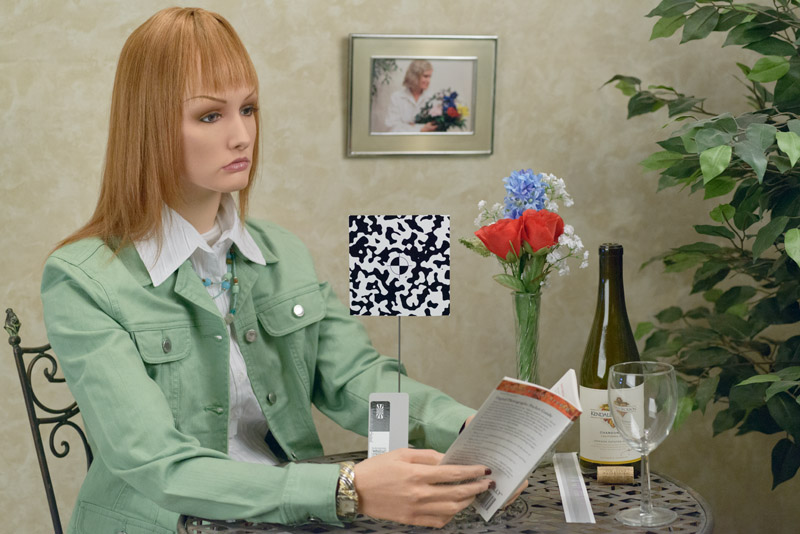 original image copyright © 2012 imaging-resource.com
original image copyright © 2012 imaging-resource.com
Here’s a reprocessed image from this RAW file (DNG) … I realized when I looked at the JPEGs below that I screwed up the contrast on the image above. So here it is again.
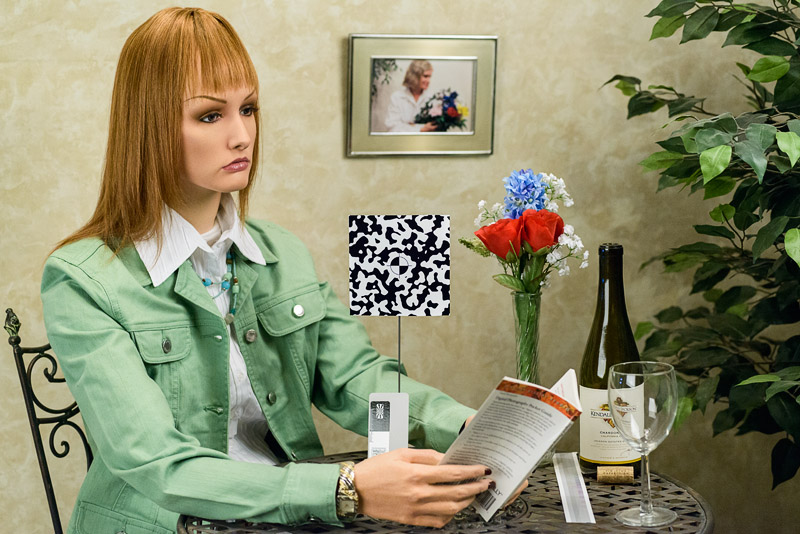 original image copyright © 2012 imaging-resource.com
original image copyright © 2012 imaging-resource.com
Now that’s much more like it …
So what about the D700? Well, imaging-resource.com only has samples in JPEG, so I switch to JPEG for the crop comparison here. I only compare the D700 against the D800 for JPEGs, but the results are even more dramatic. The D700 does retain decent detail at 6400, but it is outclassed at both 36Mp and 12Mp by the D800’s detail and noise characteristics. There is just something about the new sensors from Nikon … lower chroma noise and much finer grain to the luminance noise. I find them much easier to process at high ISO.
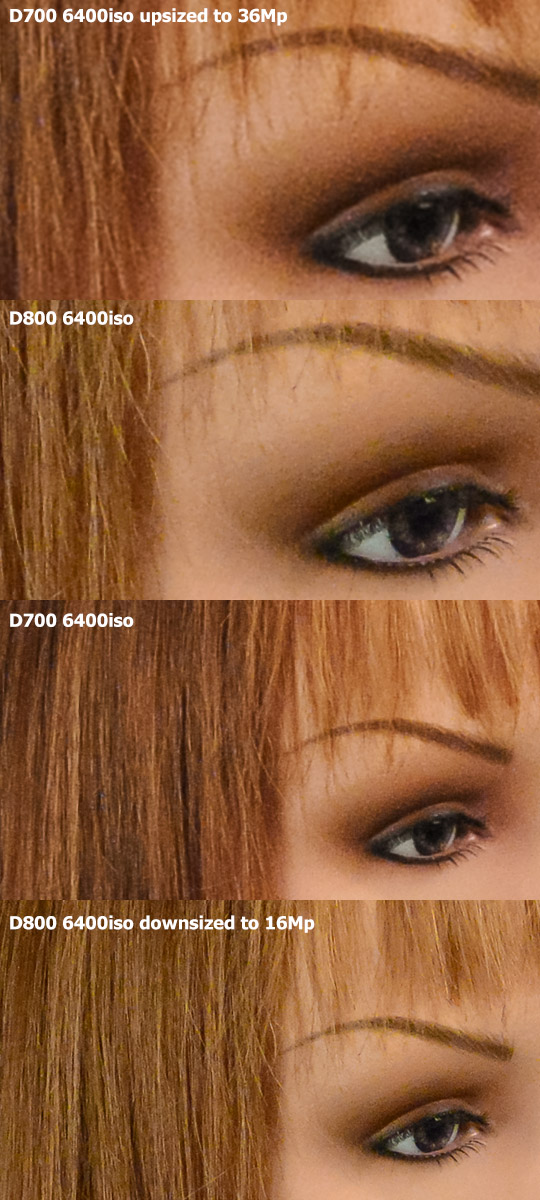 original images copyright © 2011-2012 imaging-resource.com
original images copyright © 2011-2012 imaging-resource.com
Oops … that text in the crops should read “downsized to 12Mp” … sorry.
If you are making poster sized prints of concert shots, well there is not much of a contest in my book. But if you are making small prints, you probably don’t need to upgrade your D700 just yet. Still … there is a clear advantage here. But, when they are both downsized, the advantage tends to disappear.
Here are the JPEGs for the three cameras shown, and every one of them looks just fine at web size. This would hold right up to at least 8x10 in my opinion.
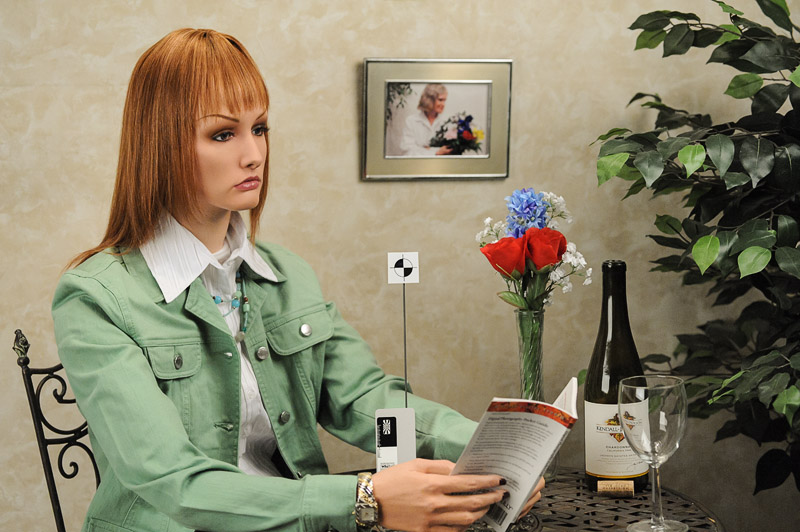 D700 6400iso original image copyright © 2008 imaging-resource.com
D700 6400iso original image copyright © 2008 imaging-resource.com
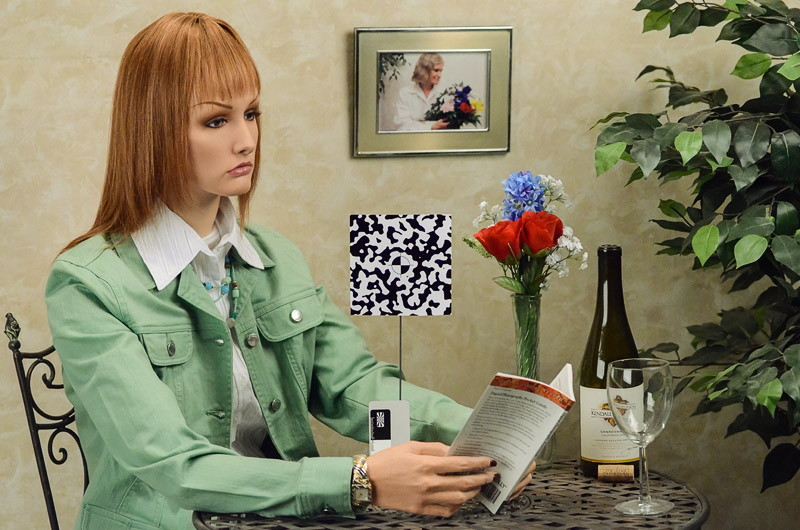 D7000 6400iso original image copyright © 2010 imaging-resource.com
D7000 6400iso original image copyright © 2010 imaging-resource.com
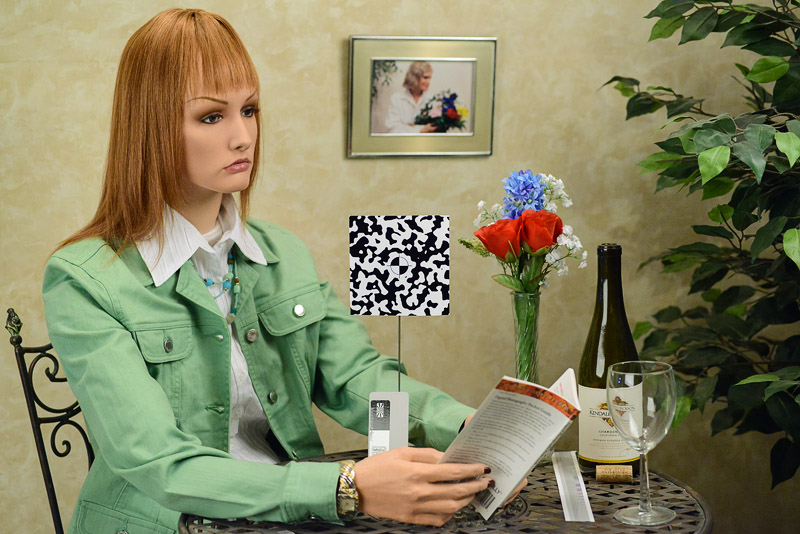 D800 6400iso original image copyright © 2012 imaging-resource.com
D800 6400iso original image copyright © 2012 imaging-resource.com
Minor differences in saturation or contrast / local contrast are down to the tweaks that I made between them. It is very hard to create exact duplicate images. But someone with a better natural feel for color could do better, and I think the similarities between these images make Nikon consistency pretty remarkable.